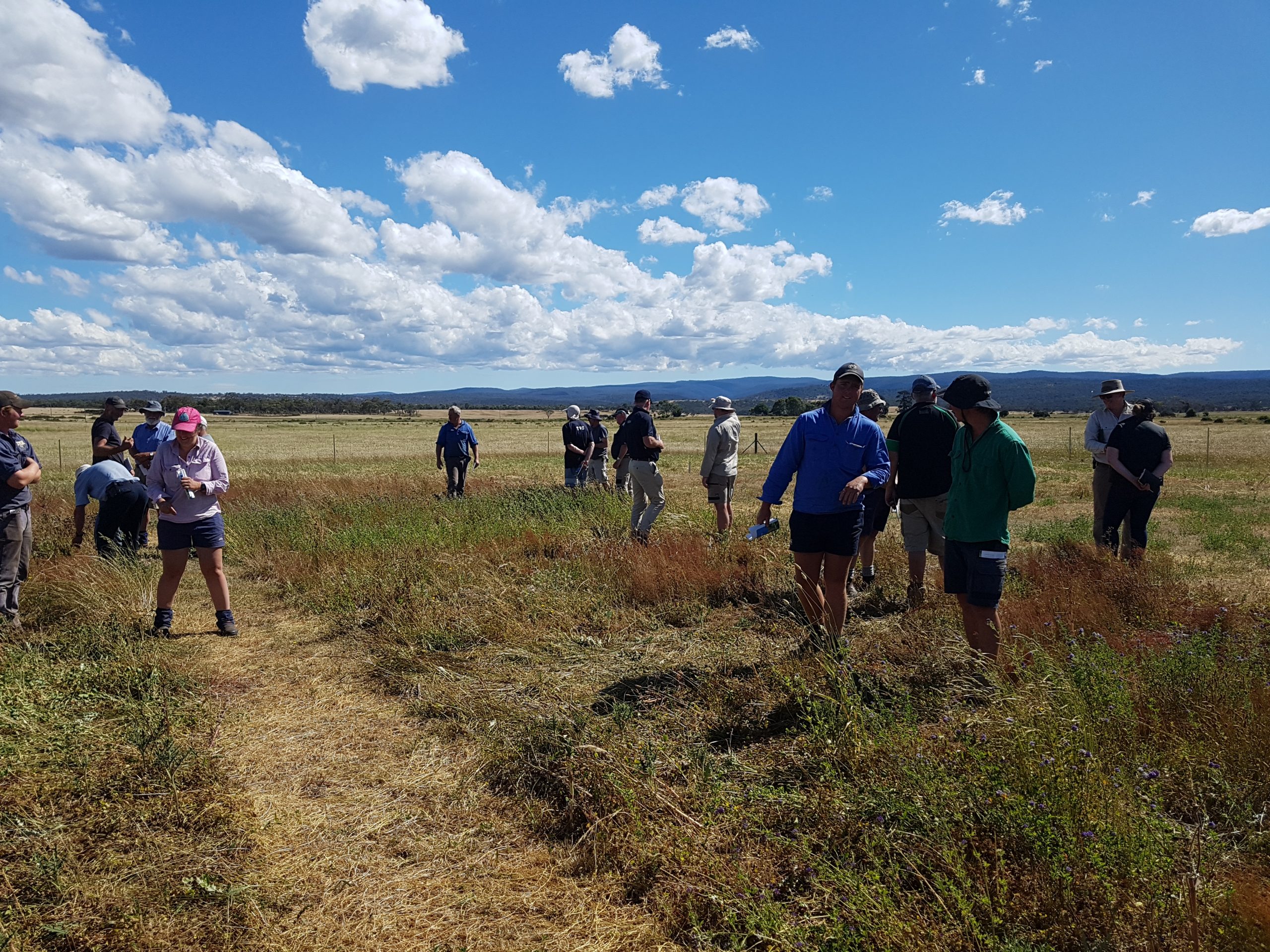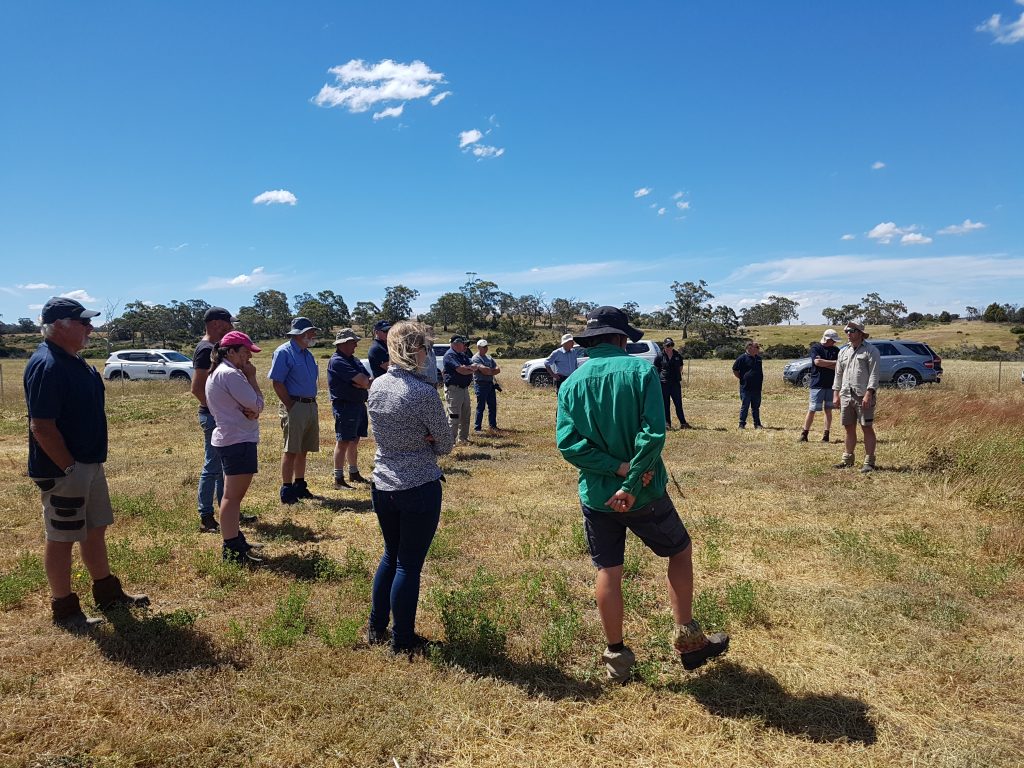In early December, NRM South’s Regional Agricultural Landcare Facilitator – in collaboration with the Tasmanian Institute of Agriculture (TIA) and the East Coast Primary Producers Association – held a successful Legume Management for East Coast Grazing Systems field day at Milton.
There has been a perennial legume trial running at the site since 2017, which has been testing legume varieties that can persist in dryland pastures on the east coast. The aim of the trial is to improve pasture resilience by boosting dry matter production through an increase in perennial species (legumes) in the pasture. This increase in production can lead to improved ground cover, lowering the risk of erosion, improving soil health, and reducing weed incursions.
There was a great turn-out of 26 attendees, including farmers, agronomists, researchers and local experts. The field day gave an update about the trial and provided farmers with some useful tips on managing lucerne: an important resilient and versatile fodder crop.
The benefits that legumes can provide for stock and pasture are well known, but the challenge is getting them to persist in dryland pastures over the long term – which this trial has experienced first-hand. However, despite the hurdles, there have been some interesting findings around the performance of different legume varieties.
 Some of the commercially available legumes in the trial look promising and have persisted despite the tough drought conditions over the last three years. ‘From the November 2019 sowing, the three lucerne cultivars and two red clover cultivars have performed well. These have continued to maintain green foliage later into the season compared with that of the volunteer sub clover and sown white clover, which have dried off. The lucerne cultivars in particular have regrown significantly following a simulated grazing in November’ said Dr Rowan Smith, TIA research fellow managing the trial.
Some of the commercially available legumes in the trial look promising and have persisted despite the tough drought conditions over the last three years. ‘From the November 2019 sowing, the three lucerne cultivars and two red clover cultivars have performed well. These have continued to maintain green foliage later into the season compared with that of the volunteer sub clover and sown white clover, which have dried off. The lucerne cultivars in particular have regrown significantly following a simulated grazing in November’ said Dr Rowan Smith, TIA research fellow managing the trial.
David Squibb from PGG Wrightsons Seeds discussed lucerne management, including understanding the different lucerne varieties and how plant persistence relates to its activity scale – a ranking given to all lucerne varieties that depends on how active they are over the winter months. If managed well, the right varieties can persist for up to 10 years. Veterinary consultant Bruce Jackson also shared some great tips on managing sheep health particularly while grazing them on lucerne to maximise stock health, while getting the best out of this very versatile fodder crop.
Work on the trial continues, with one plot being re-sown in Autumn after establishing poorly. The ongoing learning from this experiment will continue to be shared with farmers in the coming months through NRM South’s Regional Agricultural Landcare Facilitator who works with farmers, industry and community to share information on sustainable agricultural practices.
This initiative is supported by NRM South, through funding from the Australian Government’s National Landcare Program, the Tasmanian Government’s core support for Natural Resource Management, and TIA.
